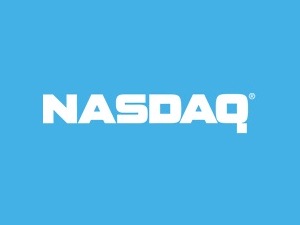The Nasdaq Composite Index reached an intraday high of 5,132.52 on March 10, 2000, and closed an at all-time high of 5,048.62 the same day. The close yesterday was almost 2,000 points below that level as it reached 3,135.81. Giddy members of the press could not stop from trumpeting the success that put the index at a 12-year high. Few asked whether we are better off today than on March 10, 2000. The answer is no. Source: bfishshadow via Wikimedia Commons
Source: bfishshadow via Wikimedia Commons
Market experts have an odd habit of worrying about what will happen to stocks next. Some currently believe that the surge of the Nasdaq, driven mostly by Apple Inc. (NASDAQ: AAPL) but also by Amazon.com Inc. (NASDAQ: AMZN) and Google Inc. (NASDAQ: GOOG), will not continue for much longer. These big companies, based on market cap, cannot continue their crazy runs. On the other hand, maybe Apple can rise another 20%, 30% or more. There are still tens of millions of iPhone 5 models to be sold.
Money is money. An investment in the index is worth much less now than in 2000. Granted, the market collapsed due largely to the Internet bubble bursting, but for those few months in 1999 and 2000, investors were better off by more than 50% than they are if they owned the index today.
Looking back, Nasdaq at 5,000 was not sustainable, obviously, even though the index was partially driven by large companies then as well — Microsoft Corp. (NASDAQ: MSFT) and Cisco Systems Inc. (NASDAQ: CSCO). Those tech companies are now aged, by the measures of innovation and sales growth. Plenty of stocks were considered hyper-growth stocks just a few years ago that have had revenue slowdowns recently — Google is among them. Google has become the new Microsoft. Investors began to worry a few years ago that Microsoft’s hyper growth was behind it because it was in only one business — Windows. Google is in one business today as far as Wall St. is concerned, despite all of its new initiatives such as Android. Google makes money on search and nothing else. Search sales are not growing as robustly as they once were.
Some experts would argue that the Nasdaq’s value was distorted by Internet startups, many of which were out of business by 2001. There are many fewer companies that fall into that category now. Even Facebook Inc. (NASDAQ: FB), with its stock in ruins, is completely viable. Today’s Internet IPOs represent less risky companies than in 1999. That means the trading that sent the Nasdaq to more than 5,000 was very speculative, and is not nearly as much so now.
But, for anyone who owned the Nasdaq index in 2000 and still owns it today, the difference in prices qualifies as a disaster.
Douglas A. McIntyre
Smart Investors Are Quietly Loading Up on These “Dividend Legends” (Sponsored)
If you want your portfolio to pay you cash like clockwork, it’s time to stop blindly following conventional wisdom like relying on Dividend Aristocrats. There’s a better option, and we want to show you. We’re offering a brand-new report on 2 stocks we believe offer the rare combination of a high dividend yield and significant stock appreciation upside. If you’re tired of feeling one step behind in this market, this free report is a must-read for you.
Click here to download your FREE copy of “2 Dividend Legends to Hold Forever” and start improving your portfolio today.
Thank you for reading! Have some feedback for us?
Contact the 24/7 Wall St. editorial team.



